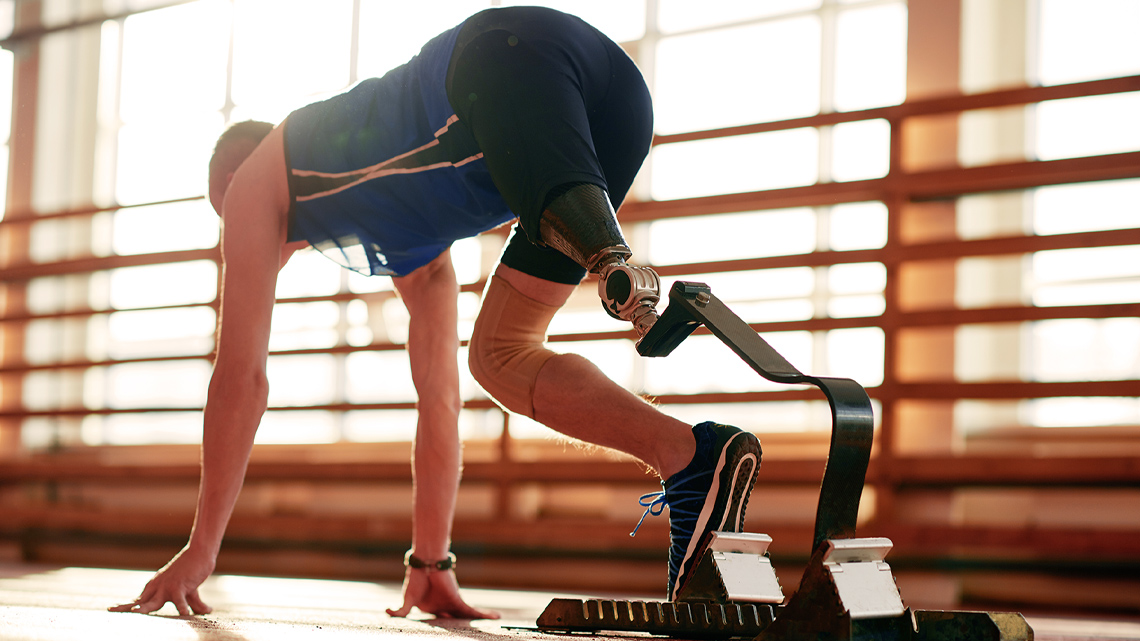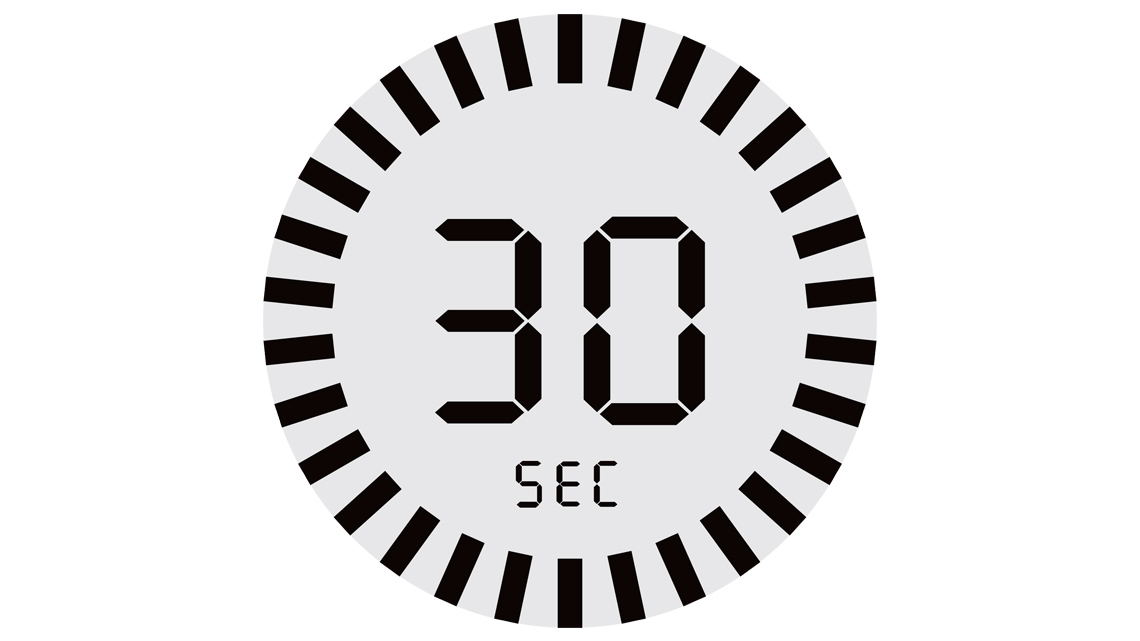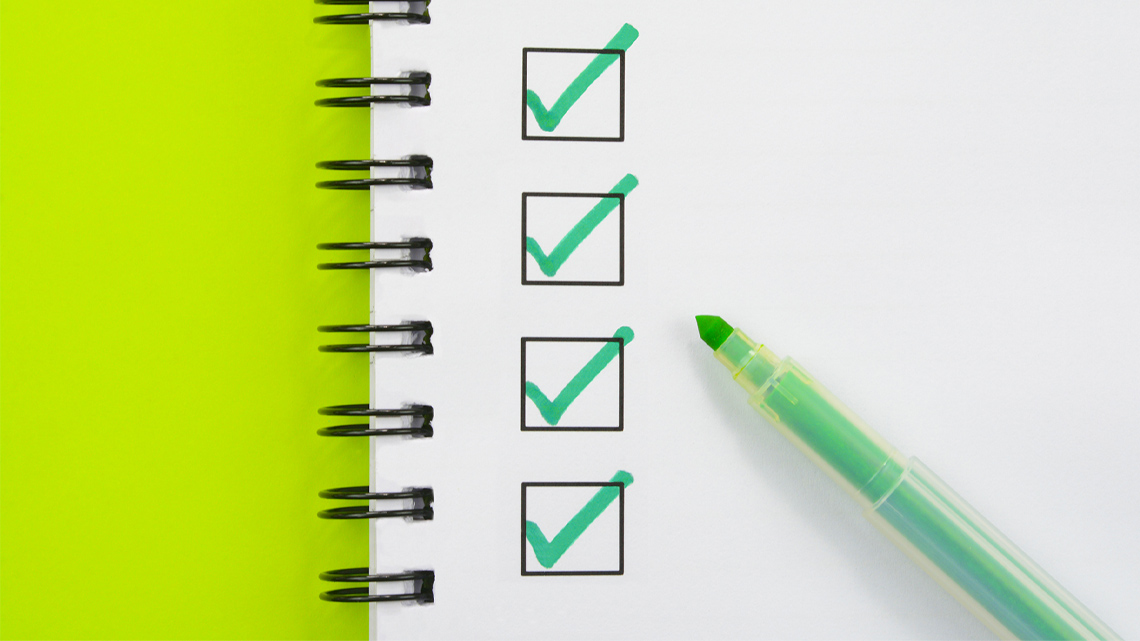Minds On
Setting goals
Have you ever set goals to improve something? Why do people set goals? If possible, discuss your ideas with a partner or record a list using a method of your choice.
To make healthy life-long choices, people need to set goals. Goals help motivate us to improve.
Before you begin any physical activity, always perform a safety check. Use the following checklist to ensure you have considered the proper safety pre-cautions for this activity.
Safety
Before you begin:
Warm Up
Warm up
You are going to do a quick warm-up activity. Choose an exercise that you can do. It can be anything you choose to get your heart beating!
Action
Creating a fitness goal
It is important for people to set goals to accomplish something. It is also important that people know what they want to accomplish by setting their goal.

For example, a student wants to improve how long they can run.
They set a goal for a time of 15 minutes. Then they make a plan to accomplish that goal.
Press the following tabs to understand the steps they could take to achieve their goal.
Decide when they want to achieve that goal.

Decide what they need to do each day or week to achieve that goal.
Sunday- Long distance run with parent
Monday- Practice racing at recess
Tuesday- Rest day
Wednesday- Run with cross country team
Thursday - rest day
Friday- Run with cross country team
Saturday- Long walk with parent

Make notes about how they did each day of the week to achieve that goal. (put check marks on a couple and happy faces on a couple.)

Setting your goals
Set a goal for one of these options:
- the number of times you want complete an exercise or
- for how long you would like to do this activity.
Record your goal digitally, orally or in print. If you would like, you can use speech-to-text or audio recording tools to record your thoughts.
During this exercise, if you feel like taking a small break, do so, but try to get back on track to completing your task.
Begin when you start the timer or are ready to count how many times you will complete the exercise.

Your fitness goals
Now, create a fitness goal that includes exercises to help you to stay healthy.
Here are some facts about fitness goals:
- You should choose activities that you enjoy. This way you will be motivated to do the activity.
- Fitness goals should be achievable and realistic. That means something you will be able to do.
- To help achieve your goals, you need to think about your plan as you are working through it and after to make your next steps
- Use the weekly and monthly planners and adjust them for your needs.
Record your fitness goals digitally, orally or in print. If you would like, you can use speech-to-text or audio recording tools to record your thoughts.
Goal setting circuits
In this task, you are going to complete a circuit of six different exercises.
Each exercise will be working on different skills, but all will involve some cardiovascular activity.
What is cardiovascular activity?
Press ’Definition’ to access what cardiovascular activity means.
Cardiovascular activity is when our hearts beat faster than normal to pump the blood to our working brain and muscles.

You will set a timer for 30 seconds of work and then 30 seconds of rest. This rest period will give you time to prepare you for the next exercise.
You will be doing six different exercises.
Please choose six exercises from the list provided or use exercises of your choice.
Press the following tabs to access tips for completing your circuits three times.
- When the timer starts, count the number of times you do the movement before the timer goes off.
- Quickly record on a piece of paper.
- Move to the next exercise after the 30 second rest and do the same.
- Set a goal of the number of times you will do the movement based on the first time you did the activity. Set a goal that is a little higher than what you did last time.
- When the timer starts, count the number of times you do the movement before the timer goes off.
- Record this number on a piece of paper when the timer finishes.
- Move to the next exercise after the 30 second rest and do the same.
- Set a goal of the number of times you will do the movement based on the first time you did the activity. Set a goal that is a little higher than what you did last time.
- When the timer starts, count the number of times you do the movement before the timer goes off.
- Record this number on a piece of paper when the timer finishes.
- Move to the next exercise after the 30 second rest and do the same.

That was amazing! Job well done! After you cool off, reflect on your activities and record your answers to the following questions.
- How did you do?
- Were you able to set attainable goals?
- How did you feel when you achieved the goals?
Record the answers to the questions digitally, orally or in print. If you would like, you can use speech-to-text or audio recording tools to record your thoughts.
Cool Down
Cool down
When you finish this activity, take a quick break, drink some water, and answer the following questions.
- Did you accomplish your goal?
- Was it too easy? Was it too hard?
- Was your heart beating fast?
Consolidation
Setting goals for everyday activity
Setting goals for everyday activity is important!
It’s time to take what you have learned in this learning activity and set a goal for the next week to increase your physical activity.
Explore the example goal setting plan in the Example Weekly Goals document. As you explore, think about a plan for how you can be active in the next week.
| Week (Blank) | ||||||
|---|---|---|---|---|---|---|
| Sunday | Monday | Tuesday | Wednesday | Thursday | Friday | Saturday |
|
Choose 6 exercises and do a 3-round circuit. Set the timer for 30 seconds of activity and 30 seconds of rest. |
Walk outdoors for 30 minutes |
Choose 6 exercises and do a 3-round circuit. Set the timer for 30 seconds of activity and 30 seconds of rest. |
Walk outdoors for 30 minutes |
Choose 6 exercises and do a 3-round circuit. Set the timer for 30 seconds of activity and 30 seconds of rest. |
Walk outdoors for 30 minutes | Rest |
Press the ‘Activity’ button to access Example Weekly Goals.
Use this checklist as you create your effective goals.
Effective goals
Complete My Weekly Goals in your notebook or using the following fillable and printable document. If you would like, you can use speech-to-text or audio recording tools to record your thoughts.
| Week (Blank) | ||||||
|---|---|---|---|---|---|---|
| Sunday | Monday | Tuesday | Wednesday | Thursday | Friday | Saturday |
Press the ‘Activity’ button to access My Weekly Goals.
Try It
Try it

Be sure to try out these exercises as you create your plan!
If possible, share your plan with a partner.
Reflection
How do you feel about what you have learned in this activity? Which of the next four sentences best matches how you are feeling about your learning? Press the button that is beside this sentence.
I feel…
Now, record your ideas about your feelings using a voice recorder, speech-to-text, or writing tool.
Press ‘Discover More’ to extend your skills.
Discover MorePause and Reflect
Pause and reflect
At the end of the week, after you complete your weekly exercise plan, reflect on your week using the checklist. Would you make any changes to your plan? Why or why not?













